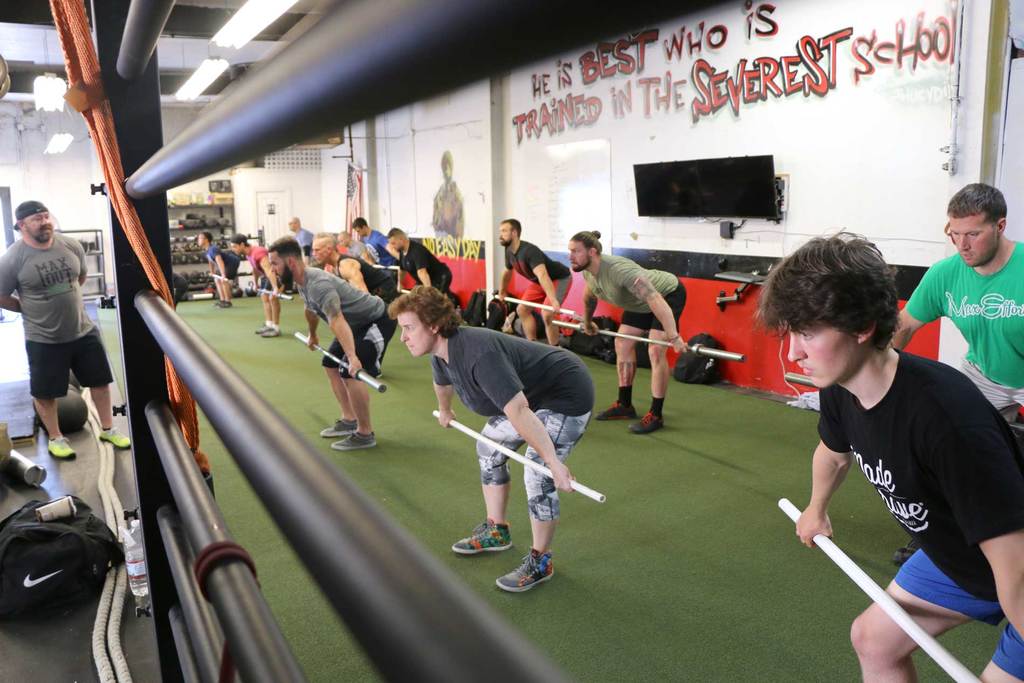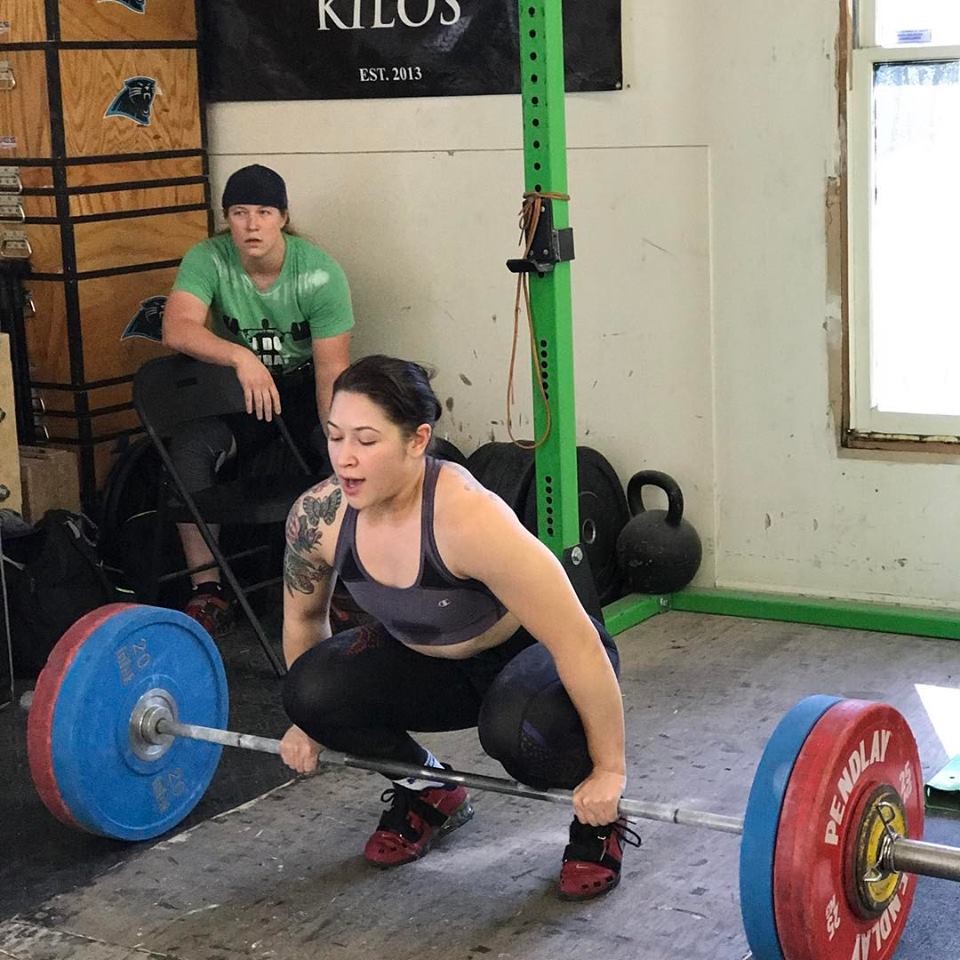Today two of my mentors were arguing again about technique in weightlifting.
Here’s the funny part – they agree on almost everything, such as:
- start position – give or take a bit here or there.
- keeping the chest up during the drive off of the floor.
- keeping long arms with elbows out during the pull.
- sweeping the bar back during the pull.
- driving with the legs with the whole foot through the floor for as long as possible.
- staying over the bar for as long as possible.
Here’s what they disagree on:
- triple joint extension (ankle, knees, and hips) being a thoughtful process
- focusing on a quick turnaround at the top – with no thought to triple joint extension (even though it probably will happen)
vs.

TECHNIQUE “ABSOLUTES”
These coaches would tell you their disagreement comes from more than this, but I have spoken with them both many times – and I know the truth. I have taken advice from both of them, and I continue to do so. They would claim their take on technique is absolutely right, so they believe their way of teaching is an absolute. This is funny really, and I will tell you why.
They have both produced incredible athletes. They have both produced athletes for Team USA at the highest of levels. They have both produced multiple international athletes. So can one really say they are better than the other? Can one really claim their technique is an absolute?
I’ve been referred to as a catapult coach several times. I assume that’s because I’ve coached with Don McCauley and I coached Jon North. I don’t consider myself a catapult coach or a triple extension coach. I am a weightlifting coach. I will teach my athlete anything I have to for them to make the lift.
I’ve coached athletes to spend less time at the top because their delay was costing them precious seconds to get under the bar. I’ve coached athletes to jump at the top to teach them an aggressive finish and to accelerate through the middle. I’m not married to a technique. There are only a few absolutes in my book:
- Stay over the bar.
- Drive with the legs, keeping the shoulders higher than the hips.
- Keep the bar close to the body with a sweeping motion.
- Hips shouldn’t travel past vertical when meeting the bar.
- The bar should continue to accelerate throughout the pull.
- An athlete should continue to pull under the bar until they meet the bar.
- Meet the bar stable.
There might be a few more, but not many.
If an athlete has won the Olympics and/or broken a world record with a certain technique, then that technique is a possibility. Yuri Vardanyan barely extended at all when he clean and jerked or snatched. Then there are athletes, such as Dmitry Klokov, who seem to have massive finishes at the top of the pull. My point is, who cares as long as the lifter is progressing toward their goals?
I will probably make both of these amazing coaches mad at me, and that is certainly not the point to this article. My point is maybe they could learn from each other if they would just chill out. I believe there is a time and place for both of their approaches.
[thrive_leads id=’11558′]
ADJUSTMENTS BY ATHLETE
I have a young girl right now who I am coaching. She’s going to be an amazing weightlifter. I look for her to earn a trip with Team USA this year. Her problem from the beginning has been spending too much time at the top.
She demonstrates massive amounts of plantar flexion and shrugs at the traps with all she has. This caused her to be slow under. Her transition from the second pull to the third pull was delayed. We’ve really focused on extending at the hips and then immediately ripping under the bar. She doesn’t do any typical snatch or clean pulls. We only do snatch and clean deadlifts. We’ve noticed a massive improvement, which has led to a great deal of personal records during this training block.
There’s another athlete who was having trouble accelerating through the middle. He is very fast under the bar, but he wasn’t creating a lot of propulsion. Therefore, the bar height simply wasn’t there for him to progress. We performed multiple sessions of snatch and clean pulls, programmed in two to three sessions of box jumps per week, and focused on a jump motion. That’s a big taboo for some, but in this case it worked. This athlete simply needed to get better through the middle of the lift. This formula was perfect for him.

I don’t have a problem with someone having a system or a way of teaching. I have progressions for the lifts I teach, but I am not married to any of them – except the absolutes I mentioned earlier. Every athlete is taught the same:
- Feet start at hip width and jump to shoulder width.
- Arms should be long and elbows turned out.
- The setup starts with the back neutral, knees slightly in front of the elbows, and weight in the middle of the foot.
- The pull begins by pushing your feet through the floor, immediately squeezing the bar in with your lats, and moving the knees out of the way by pushing them out and back. (Another absolute is to never go around the knees.)
- Once the bar is slightly below the knees, the shoulders and hips rise at the same time until the second pull begins.
- Stay over the bar for as long as possible.
- The bar meets the upper thighs in the clean, and in the crease of the hip in the snatch.
- Once the hips extend, shoulders finish up and slightly back, and the pull under begins the minute the hips extend.
These are just a few of my technical cues. There are so many more, but you get the point. The fact is I am not solely committed to any one of them. I have just found most athletes respond well to these cues in my experience. These are just where I start. The response by the athlete dictates where we end up.
[thrive_leads id=’10673′]
DIFFERENT APPROACHES
I just encourage all of you up-and-coming coaches to avoid being dogmatic – it will paralyze you. I guess the bright side is I have learned massive amounts from each of these coaches, so I benefit from each. At the end of the day I benefit because I am not fixed completely on any one particular technique. I stick to basic physics and biomechanics. I also watch other great lifters from around the country and world. I break down their technique to see if I can pick up something new. I believe you will all benefit from this approach.
I want to be clear on one more thing. I love both of these coaches like family. I would do anything for either of them, and they know it. Personally, I believe it’s like most wars that last several years – neither side remembers why they are fighting. They just know they’re not supposed to agree.